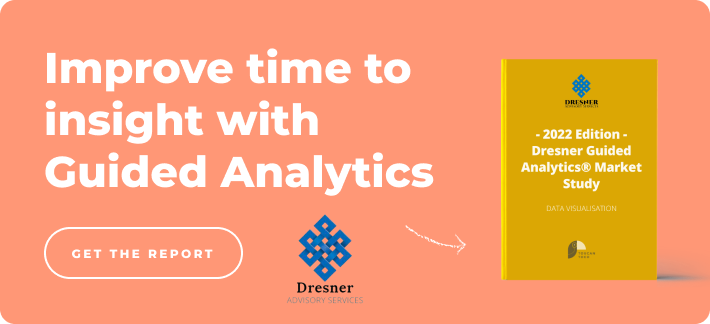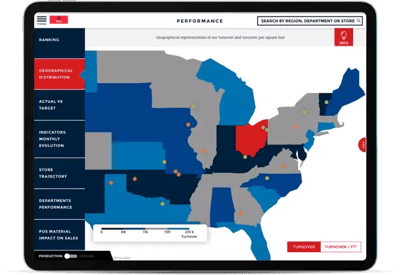The age of slow data has come to an end. Business users are no longer willing to wait days or weeks for IT teams to deliver the figures they need. They want data insights, and they want them now. And thanks to cost-effective and easily scalable cloud solutions, they’re increasingly getting what they want.
One such solution is Snowflake: the cloud-based data warehouse has revolutionized the way data is stored. Snowflake allows IT teams to be more efficient and relevant, while its flexible, pay-for-what-you-use business model has helped companies cut down on their cloud budgets. But if you’ve picked Snowflake as your data-storage solution, you already know all of this. What you might not know is that Snowflake is only part of the solution to insights from data.
Your technical teams use Snowflake directly to query data, but it might be harder for your business teams. In order to unleash the power of Snowflake at every level of your organization, you need to invest in a Snowflake-compatible business intelligence (BI) platform that everyone can use and understand. And as you’ve set out to look for the perfect solution, you might pay attention to the cost, design, and security, while a very important criteria is overlooked: the live data connection. Here are 5 reasons why it’s important to look for a BI that can access live data from Snowflake.
Live Data Means Fresh Data
A BI platform with a live connection will automatically showcase the latest data available on Snowflake — no lags, no delays, no discrepancies. BI platforms without live data connections will periodically “clone” data from Snowflake: they’ll be updated regularly, at a pace that can be set by you or the platform itself. This means whenever you look at your BI platform, you’ll get the cached data from the latest load which might have happened hours, days or weeks ago.
While many BI platforms claim to connect to Snowflake, all connections are not equal.There are levels of technical sophistication when connecting to Snowflake: some systems connect and copy, others connect and consume. Every BI platform that claims to be built for Snowflake doesn't necessarily include a live data connection to Snowflake. While the live data connection is the most sophisticated option technically, it is, in fact, much simpler. Having to move increasingly voluminous data and store it in a secondary location adds unnecessary complexity, and is way riskier (but more on that later). Instead, you should aim to simply have your data stored in one place, which is the main promise of Snowflake.
The Data Storytelling Platform natively built for Snowflake
Live Data Means Accurate Data
Imagine for a moment what it would be like if you and your team didn’t have the option to work on the same file or presentation simultaneously: instead of being able to add your comments and see the way team members are modifying the shared document, you’ll have to wait for each person to individually download the latest version of the document, modify it, and upload a new version to the network. Even the most organized group will soon find the degree of planning this requires to be unachievable. In fact, this would be unimaginable in most modern workplaces.
You should have the same expectation for your data: everyone should be able to access the same, most recent version of a dataset. Having a single source of truth for your data will also allow you to avoid desynchronisation among your teams. Without a BI platform that pulls data live from Snowflake, your business teams would be working on a cached version of data, while IT teams would be handling the most recent data available on Snowflake. Even worse, the teams working from cached data may all be working from different caches from different times! During meetings, they’ll present each other with incoherent information and figures, and might draw incompatible conclusions.
Live Data Means Better Decisions
If you’re thinking about acquiring a BI solution for Snowflake, it’s because you want to empower your business users with precise data insights that will allow them to be better at what they do. But how are they supposed to do that if the data they have access to is outdated? If their BI platform simply showcases data that is cached and copied from Snowflake, then it might be days or hours old. Depending on your industry, this might be more or less of a problem: if they’re in charge of monitoring the B2B sales of industrial equipment, then a daily or weekly load might be enough. If, on the other hand, they’re in charge of taking on-the-fly decisions about a live marketing campaign that is driving traffic to a website, they need the most recent data they can get.
The hurdles standing between business decision makers and the data they need is what we call “data friction”: it’s the countless little steps you need to take to access the most relevant data to you. These painstaking steps can chip away at your willingness to rely on data. Data analytics are hard, especially for people who didn’t receive a formal statistical education. Making it easy for your team to access data that they know is relevant so they can make decisions in seconds is what you should aim for.
Live Data is Less Risky Data
Data security is not a matter to be taken lightly. Your cloud solution might be foolproof, with a sophisticated system of user permissions, but the same cannot necessarily be said for the BI that will cache and copy your data. Having a granular and precise row-level user permission is paramount in Snowflake if you handle any kind of sensitive data (and in the age of GDPR and e-Privacy, almost all data is). You must make sure that this granular system of permissions stands true within your BI platform. Live data connection allows this. Copying and caching, on the other hand, might put all the data that is included in the load at the same level of accessibility.
Copying and moving big amounts of data is non-trivial: if you don’t enforce an appropriate security system, you create the potential for a data breach that can jeopardize the data of your partners or customers. And we all know what legal, financial and PR consequences a data breach can ensue.
Live Data Means Richer Analysis
The beauty of Snowflake is that it effortlessly centralizes data from various sources, making it easier to cross-analyze and draw relevant conclusions from. A lot can be said about the particular architecture of Snowflake, allowing data to be both historicized and ready to be queried. This characteristic is what makes Snowflake so well-suited for data exploration: it allows data analysts to effortlessly navigate between different data sets, spotting interesting patterns and digging deeper where they think there might be something to be learned.
While it’s true that business users do not dedicate so much time to data exploration, they also should notice interesting patterns and make connections among seemingly unrelated data sets whenever necessary. Every piece of data needs context to be fully understood: this is the main premise of data storytelling, a tried and tested data communication method that makes it easier for everyone to understand what’s hidden beneath the number. By copying and caching only part of your data, you cut it off from the global context of your organization, and might miss opportunities to ask important questions.
By choosing a BI solution that offers live connection to Snowflake, you’ll be sure to unlock the very promise of Snowflake at every level of your organization: relevant, timely and secure data, presented in a way that even non-technical users can understand. Be sure to ask the right questions to your potential BI provider to figure out what they mean exactly when they say their platform connects to Snowflake. Or you could head here and request a demo for our native on Snowflake data storytelling platform.







